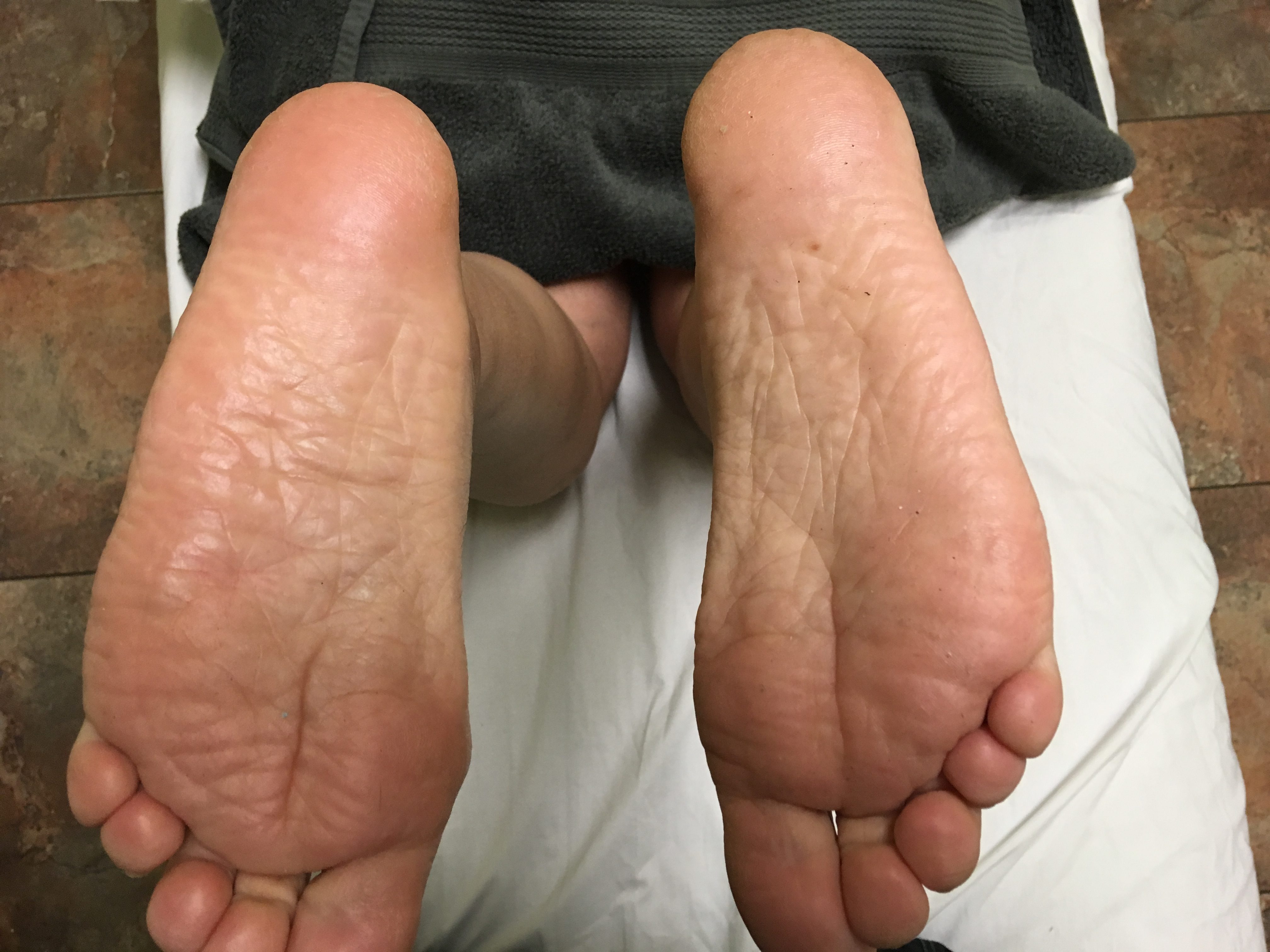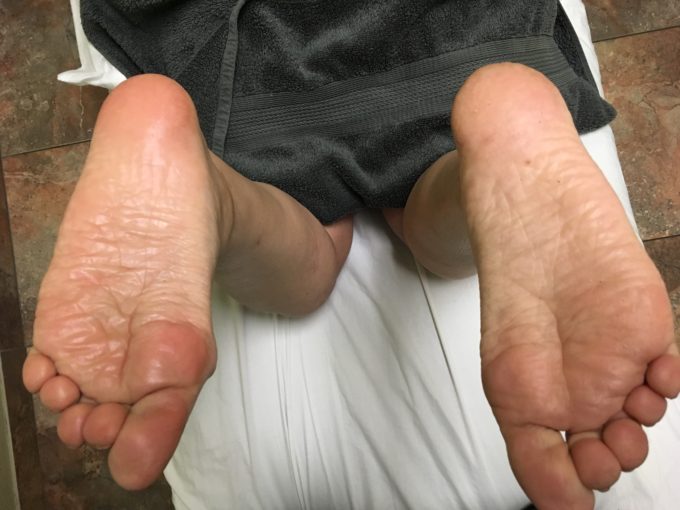By Dr. Ross Turchaninov
We’ve already shared with readers one of the unusual cases of Plantar Fasciitis from our clinic: http://www.scienceofmassage.com/2015/01/plantar-fasciitis. Here is another interesting clinical case we’ve recently treated:
The patient was a 54 year-old female who was treated in our clinic for left side lower back pain complicated by Sciatica type pain which was accompanied with periodically felt numbness within distribution of the femoral nerve all way to the bottom of the left foot. The patient is a hairdresser and the symptoms became so severe that she was forced to temporarily stop working since even after 30 minutes of standing, her lower back pain and its radiation to the left leg and foot became unbearable.
During her lower back evaluation, it was obvious that her left L5 spinal nerve was severely compressed under the sacro-iliac joint by tensed lumbar erectors and quadratus lumborum muscles which elevated the left side of her pelvis eliciting the irritation of the L5 spinal nerve. For almost three weeks we used various Medical Massage methods and techniques to release the nerve from the direct compression by tensed lumbar erectors and quadratus lumborum muscles, until eventually the pain and peripheral neurological symptoms disappeared.
The last control session was scheduled in two weeks to be sure that achieved clinical results were stable. When the patient walked into the clinic she was visibly in pain and limping on the left side. Our first reaction was disappointment since it looked like the conducted therapy didn’t provide stable clinical results. However, the patient reported the presence of different symptoms. She said that she didn’t have any pain in the lower back or peripheral neurological symptoms in her leg. Her major complaint now was a lot of tightness on the bottom of the foot, which worsened after long walks and prolonged standing. Her family physician diagnosed her with Plantar Fasciitis and sent her to a podiatrist. However, since it was time for her control appointment she wanted to see if Medical Massage therapy could be used to reduce symptoms of Plantar Fasciitis.
Even visual observation of her feet showed a dramatic difference between plantar surfaces of left and right foot. Fig. 1 illustrates the initial clinical picture.
Fig. 1. Plantar surfaces of both feet with initial clinical picture on the left foot.
Please look carefully at the picture and compare both feet. As you can see, the left foot is wider in all parts starting from the heel to the heads of the metatarsal bones and all three of its arches (lateral, medial and transverse) are much less prominent compared to the right foot. Overall the foot looks more like a flipper then a normal foot.
We applied MEDICAL MASSAGE PROTOCOL for the Plantar Fasciitis, especially concentrating on the layer by layer drainage starting from skin and plantar fascia all way to deep drainage from the short plantar muscles. Fig. 2 illustrates the clinical picture at the end of the first session.
Fig. 2. Both feet at the end of the first treatment session on the left foot.
As you can see, both feet are almost identical in shape and all arches are clearly visible in the left foot. As soon as she stepped on her foot she didn’t feel any pain or tightness.
The patient was given homework (passive stretches, Dr. Scholtz’s Gel inserts, avoidance of flip flops and barefoot walking at home, daily foot bath in hot water with a lot of Epson Salt to hypertonic solution). She came back in two days with no symptoms of Plantar Fasciitis. We observed her for two months since she chooses to have monthly supportive Medical Massage sessions to prevent her lower back pain. She hasn’t had any complaints since.
AFTERWORDS:
1. The patient’s symptoms of Plantar Fasciitis were a secondary reaction of the soft tissues on the bottom of the foot to almost two months of compression of the L5 spinal nerve in her lower back under the left sacro-iliac joint.
2. Since her major complaint was severe lower back pain, the tightness and pain on the bottom of the foot were expected symptoms associated with the compression of the part of the sciatic nerve which gives origin to the tibial nerve.
3. After pain in the lower back and its radiation to the leg and foot was eliminated, the residual symptoms of Plantar Fasciitis-look like pain became prominent complaint.
4. The cause of these symptoms was delayed drainage from the foot with fluid retention, especially in plantar fascia since chronic irritation of the tibial nerve triggered vasoconstriction which interfered with the normal drainage.
5. Conducted therapy on the lower back freed the L5 spinal nerve from the compression, but interstitial edema was still present in the plantar fascia and it triggered symptoms similar to Plantar Fasciitis and flipper shape of the foot. As soon as the plantar fascia was drained and its elasticity restored the symptoms of Plantar Fasciitis were completely gone.
Category: Blog


